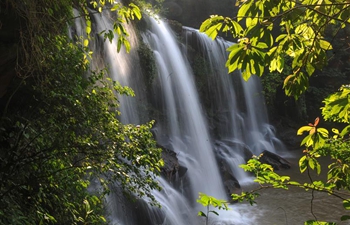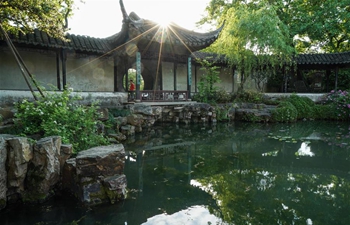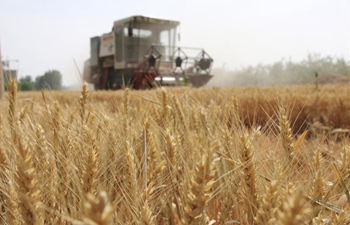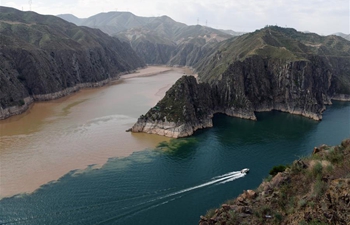A horse and its foal eat grass at a grassland in Nyingchi Prefecture, southwest China's Tibet Autonomous Region, May 27, 2019. Monitoring data provided by Chinese Academy of Sciences and departments on environmental protection shows that Tibet maintains a stable ecological structure in terms of its air, sound, water, soil, radiation level and ecological environment. With most areas remaining their original states in ecology, Tibet is one of the regions with best ecological conditions in the world. So far Tibet has established a well-distributed ecological environment protection network consisting of 47 nature reserves, 22 eco-function reserves, 4 national scenic areas, 9 national forest parks, and 22 national wetland parks. Since 2001, the government has paid 31.6 billion yuan (4.71 billion U.S. dollars) in eco-compensation for protecting forests, grassland, wetland, and key ecological reserves. Located in the main body of Qinghai-Tibet Plateau, Tibet is rich in wildlife resources, water resources, and mineral resources. (Xinhua/Li Xin)
Tibet maintains stable ecological structure
Source: Xinhua| 2019-06-06 16:42:30|Editor: ZX
YOU MAY LIKE
-
Network of ecological monitoring stations established in Tibet
-
Tibet to have helicopter emergency rescue system by 2020
-
Hydropower station put into use in Tibet's no-electricity area
-
Dance drama "The Railway to Tibet" to be restaged at China's prime theater
-
In pics: snow mountain in Bomi County, Nyingchi of China's Tibet
MORE PHOTOS


















